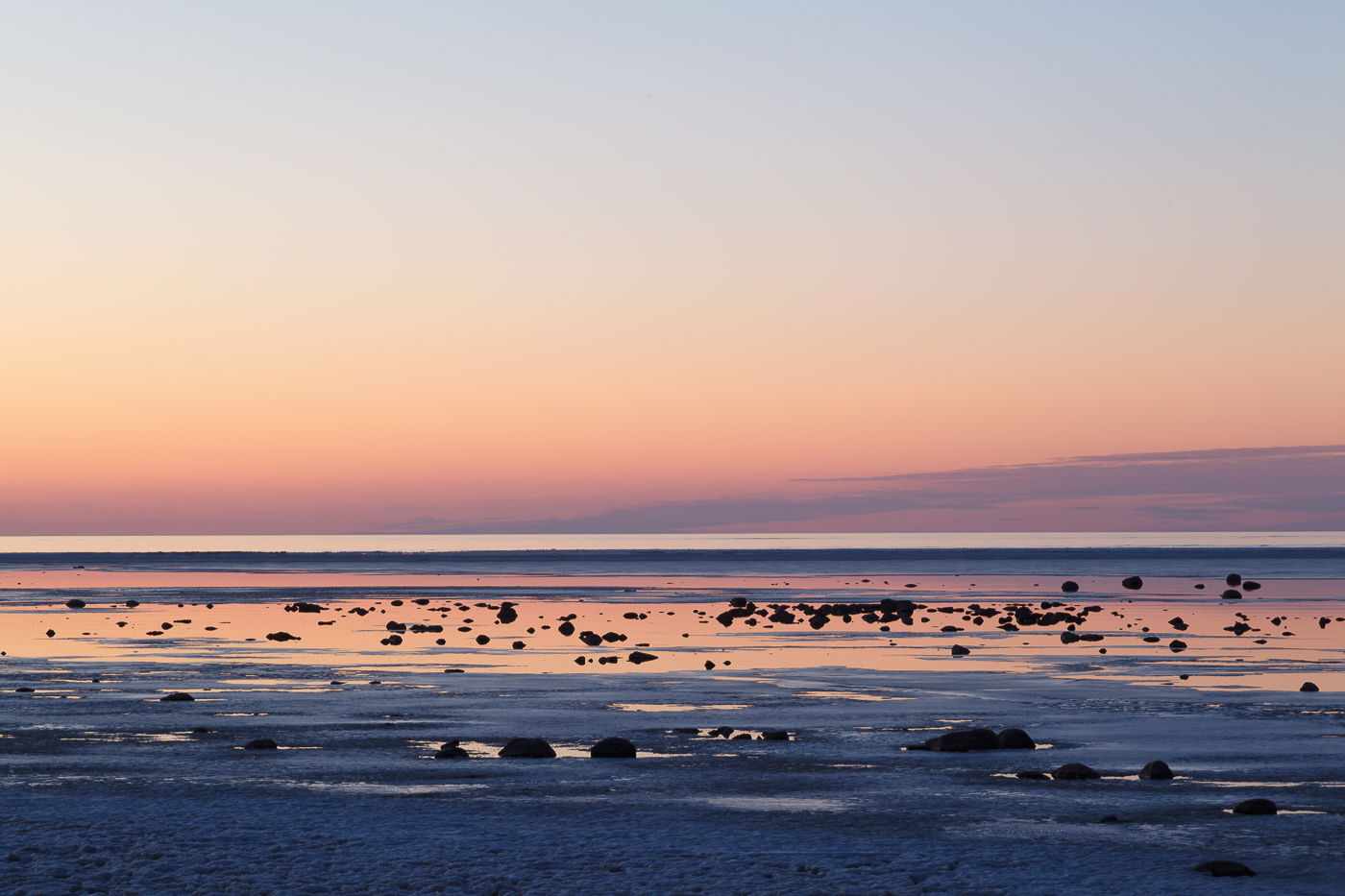Kettle Point is a beautiful and unique place, one of only a few spots where kettles - or stone concretions - are found. These rocks that "grow" were created millions of years ago and most years can be seen as half circles of various sizes rising out of the waters of Lake Huron shore at Kettle Point. They are formed by mineral precipitation around a nucleus, with each layer visible in a broken or split kettle. The ones at Kettle Point are called cannonball concretions.
Sunset, February, 2012
Lake levels were unusually low in 2012 and 2013, the lakebed in Kettle Point dried out and many more kettles were visible, along with the beautiful shale from which they emerged.
Emerging Kettle, March 2012
Broken Kettle, September 2012
As the lakebed receded, kettles that had been hidden for many years became visible. Some were just emerging, popping up from the shale around them. Others were large, magnificent structures. Some were broken, their circular structure visible in the pieces. They are natural creations and they are beautiful. The external banded markings show the water levels in different periods.
Large Cannonball Concretions, April 2013
Kettle Interior, April 2013
I returned time and time again to walk amongst these ancient stones. I sat with them and I photographed them, and felt grateful for the beauty of our natural world.
While the lake was extremely low in 2012 and 2013, the lowest in several decades, water levels in the Great Lakes are cyclical; a return to a more normal level was likely.
The winter of 2013 was long and cold with lots of snow and no mid-season melt. Lake Huron froze early and stayed frozen. There was no loss of lake water due to evaporation and in the spring of 2014 the water level was high. The kettles became submerged once more. This past winter saw the same pattern as the prior year and as the ice leaves the lake the water level remains high.
There are now no kettles to see. A loss for sure. Where once there lay a field of emerged and partially submerged kettles there is now only water.
April 15, 2015
How long do we have to wait for the kettles to return? Will they return? We don't know. I feel a deep sense of regret. I wish I'd spent more time there. I wish I'd made more images. I wish I'd been there more often in the early morning. I've learned a lot watching the kettle landscape change. Change is the only constant. I know that, and going forward I will stay with beauty where I find it, allow it to energize and fulfill me, and use it to further my photographic journey.









